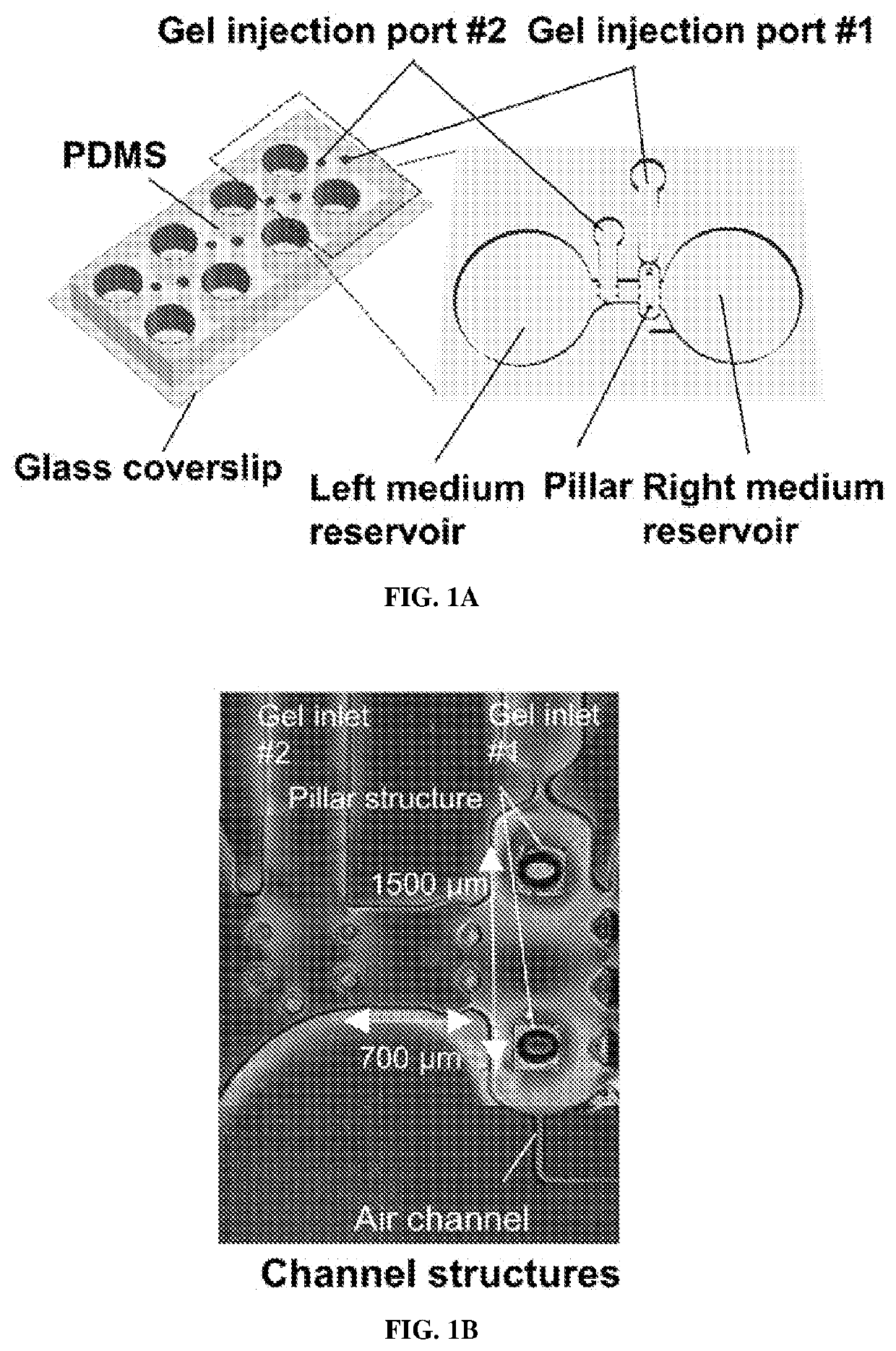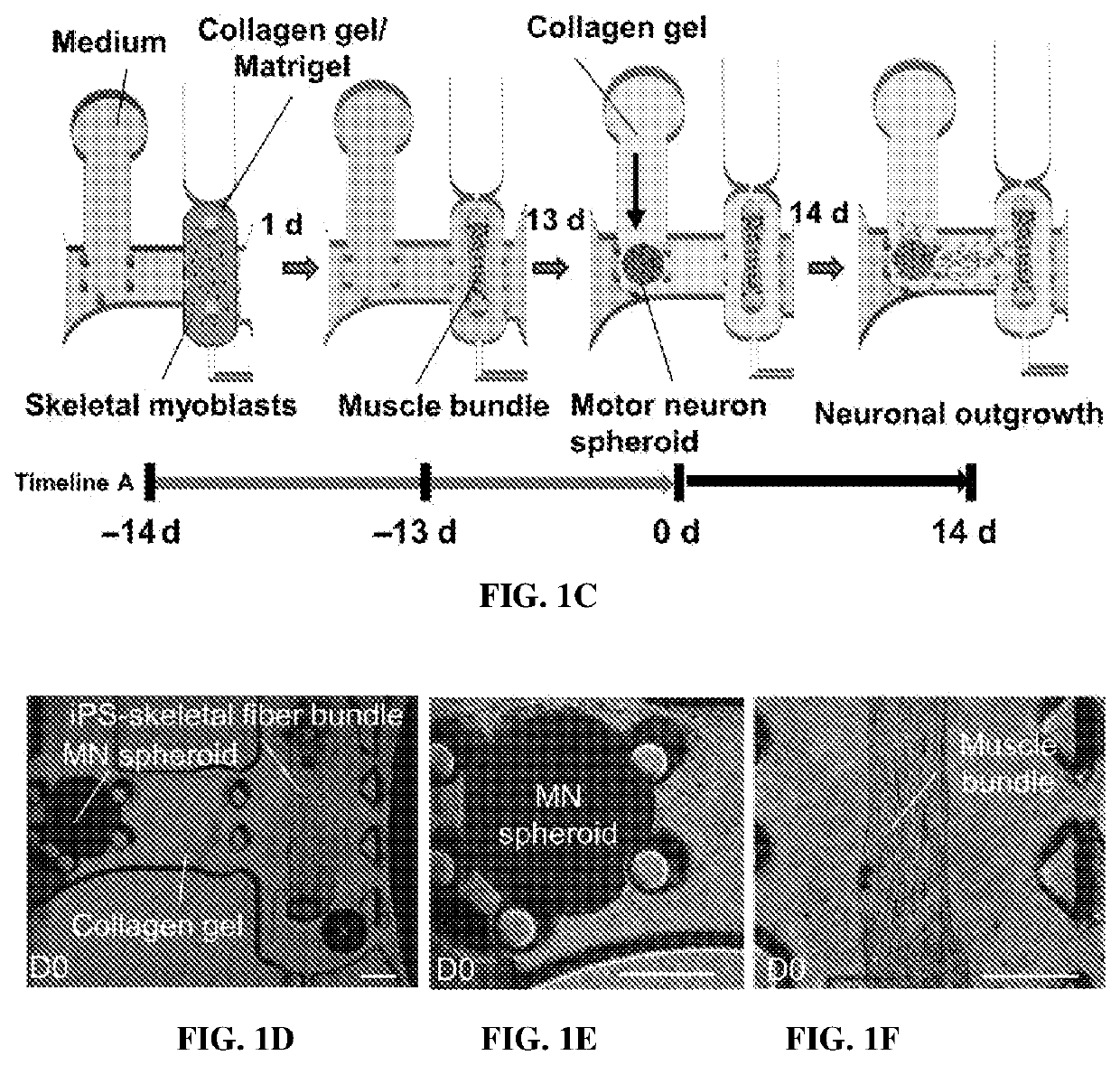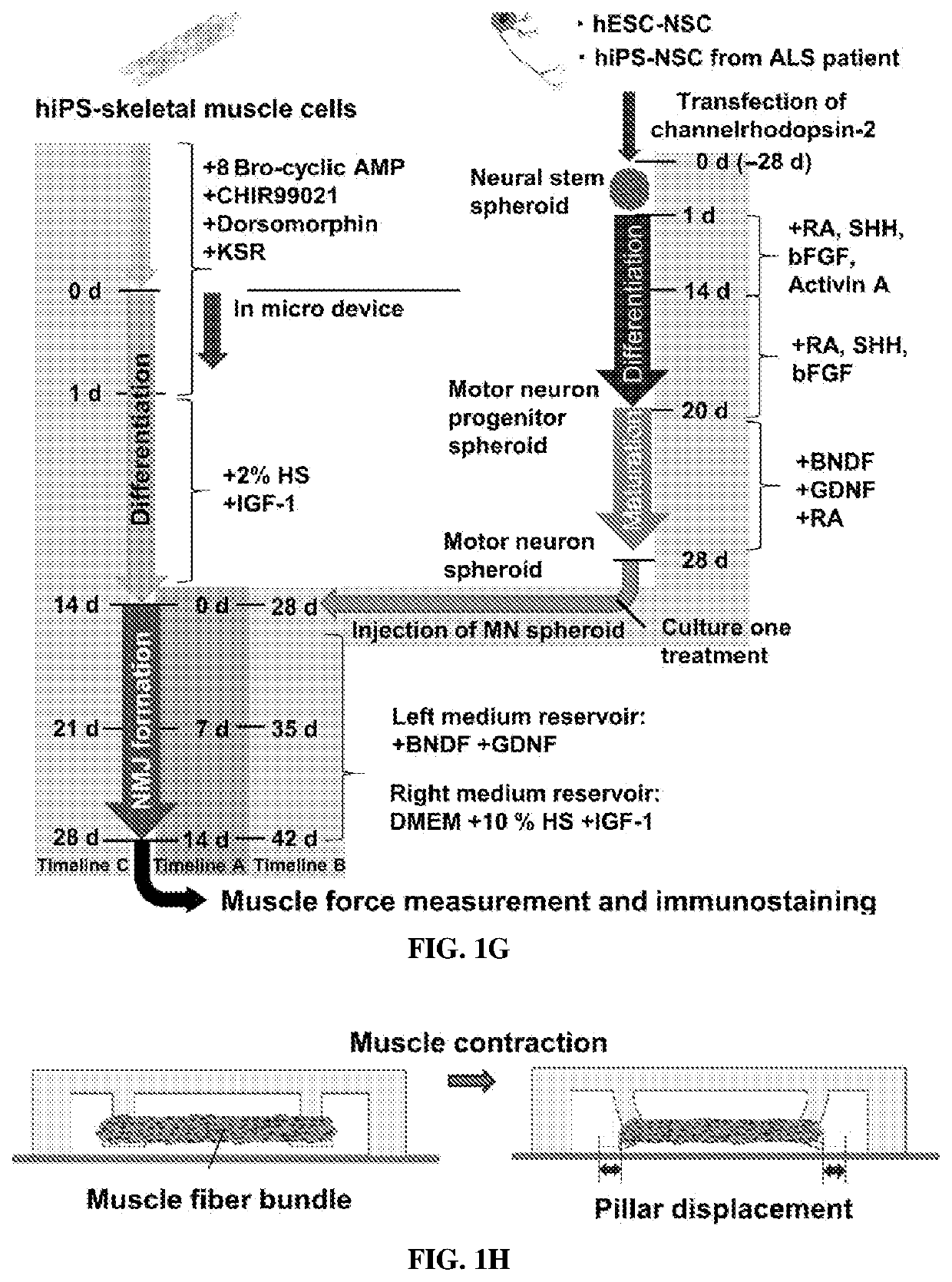A micro physiological model for neuronal and muscular diseases and disorders
a neuronal and muscular disease and micro-physiological model technology, applied in the field of micro-physiological models for neuronal and muscular diseases and disorders, can solve the problems of lack of effectiveness of existing drugs and severely limited the scope of drug development, and achieve the effect of improving a biochemical
- Summary
- Abstract
- Description
- Claims
- Application Information
AI Technical Summary
Benefits of technology
Problems solved by technology
Method used
Image
Examples
example 1
rformance and Characterization of MN Spheroids in Microfluidic Devices
Materials and Methods
[0192]Microfluidic Device Fabrication
[0193]The mold fabrication process was similar to that previously reported (Uzel et al., Sci. Adv. 2, e1501429 (2016)). Briefly, device structures were designed using Solidworks (Dassault Systémes SolidWorks Corporation), and the patterns were transferred onto a transparency mask using high-resolution printing (FineLine Imaging). Silicon wafers were then fabricated by photolithography using typical SU-8 photoresist techniques. All the mold surfaces were treated with (tridecafluoro-1,1,2,2-tetrahydrooctyl)-1-trichlorosilane for at least 2 hours. For the main microfluidic section, PDMS and curing reagents (Ellsworth Adhesives) were mixed in a 10:1 ratio, poured into the SU-8 mold, and cured at 80° C. for at least 6 hours. The pillar head was then attached to the base of the pillar. The pillar head consisted of 250 μm by 250 μm squares of 25-μm-thin PDMS (obta...
example 2
on of a 3D Motor Unit Model and NMJs in Microfluidic Devices
Materials and Methods
[0211]Formation of 3D Motor Units
[0212]To avoid single-cell attachment to the glass bottom, the microfluidic device was incubated with 4% Pluronic F-127 (Sigma) in the incubator for 1 hour, rinsed with distilled water, and dried. Human iPSC-skeletal muscle cells were injected into the right compartment of the microfluidic device with a mixture of porcine skin type I collagen gel (Nitta Gelatin, 2.4 mg / ml) and 10% MATRIGEL® (BD Biosciences) via gel injection port no. 1 (FIGS. 1A and 1B). A 3D muscle fiber bundle was formed within 24 hours, with both sides of the muscle attached to the pillar structures. The muscle fiber bundle was then cultured and differentiated using 2% horse serum and IGF-1. After 13 days of differentiation, predifferentiated MN spheroids (normal and ALS) were injected into the left compartment (FIG. 1B) via gel injection port no. 2 with collagen without MATRIGEL®. For the cocultured ...
example 3
icity Induced by Excess Glutamic Acid Treatment Mimics ALS Pathogenesis
[0223]Glutamate (glutamic acid) is widely recognized as one of the major factors contributing to ALS pathogenesis (Blasco et al., Curr. Med. Chem. 21, 3551-3575 (2014)). Prolonged excitation caused by excess glutamate is known to harm neurons (Plaitakis, Ann. Neurol. 28, 3-8 (1990)). Normally, glutamic acid is cleared from neurons via several pathways [e.g., neuron-neuron and neuron-astrocyte junctions (Seifert et al., Nat. Rev. Neurosci. 7, 194-206 (2006))]; however, patients with ALS are unable to remove glutamate and therefore suffer from MN excitotoxicity because of their low threshold of activation, resulting in neuron death. The prevention of MN excitotoxicity is thought to be the mechanism of action of riluzole, one of the symptomatic ALS treatments.
[0224]To mimic this, a high concentration of glutamic acid was added to an established 3D motor unit model. After 7 days of coculture, glutamic acid was added ...
PUM
| Property | Measurement | Unit |
|---|---|---|
| Length | aaaaa | aaaaa |
| Length | aaaaa | aaaaa |
| Length | aaaaa | aaaaa |
Abstract
Description
Claims
Application Information
 Login to View More
Login to View More - R&D
- Intellectual Property
- Life Sciences
- Materials
- Tech Scout
- Unparalleled Data Quality
- Higher Quality Content
- 60% Fewer Hallucinations
Browse by: Latest US Patents, China's latest patents, Technical Efficacy Thesaurus, Application Domain, Technology Topic, Popular Technical Reports.
© 2025 PatSnap. All rights reserved.Legal|Privacy policy|Modern Slavery Act Transparency Statement|Sitemap|About US| Contact US: help@patsnap.com



